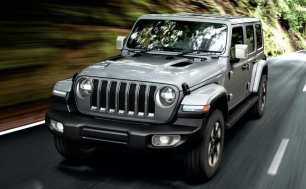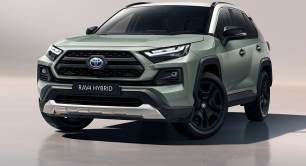The Jeep Wrangler looks like a cartoon of a four-wheel drive, that’s how familiar and well-known the design is. It’s almost generic, like the word Jeep.
You could say the design is iconic, given that the roots of this SUV stretch back to the little Willys off-roader built for the US army in World War II. And to this day the slotted grille, pronounced wheel guards, short and upright windscreen, even the removable doors are still with us in this latest incarnation.
That’s why each generation of the Wrangler only sees very subtle tweaks to famous shape and look, in much the same way a Porsche 911’s design changes at the rate of dripping water reshaping a rock.
Changing the styling completely would destroy the look which connects the Wrangler to its past and the nostalgic appeal would be over.
So, this update sees more than subtle styling changes in the form of a tweak to the grille with the addition of a metallic-look trim around each of the slots while the mesh insert now has larger openings.
Along with this there’s a new front bumper. The Wranglers we tested had the optional heavy duty steel front bumpers.
There’s also some interior changes in the form of a new dashboard trim, horizontal air vents and then there’s the 12.3-inch media display which goes a long way to making the cabin look more modern.
Still, the interior is busy with buttons and switches in a design that seems to mix the look of heavy machinery controls with a prestige car. The Nappa leather of the Rubicon grade lifts the quality feel higher.
All Wrangler interiors also have an internal roll-over cage which covers the entire cabin, for the fixed metal roof and removable roof body style which are standard on the Overland and Rubicon.
Only the Rubicon is offered in a two-door and a four-door, while the Overland and Sport S are four-door only.
The Rubicon two-door looks cute and fun to my eyes, while the four-door versions look a bit more serious and beefy, but both definitely still give off tough and adventurous vibes.
The wheelbase difference between the two is as giant as it looks. The Rubicon two-door’s wheelbase is 2459mm while the four-door Rubicon’s, along with the Sport S and Overland, is 3008mm.
The Wrangler ranges in length from 4334mm for the Rubicon two-door to 4882mm for the four-door Wranglers. Width is the same for all Wranglers at 1894mm and the height ranges from 1879mm in the Rubicon two-door to 1901mm in the four-door versions.





















.png)

























































.png)





























 copy.png)




















